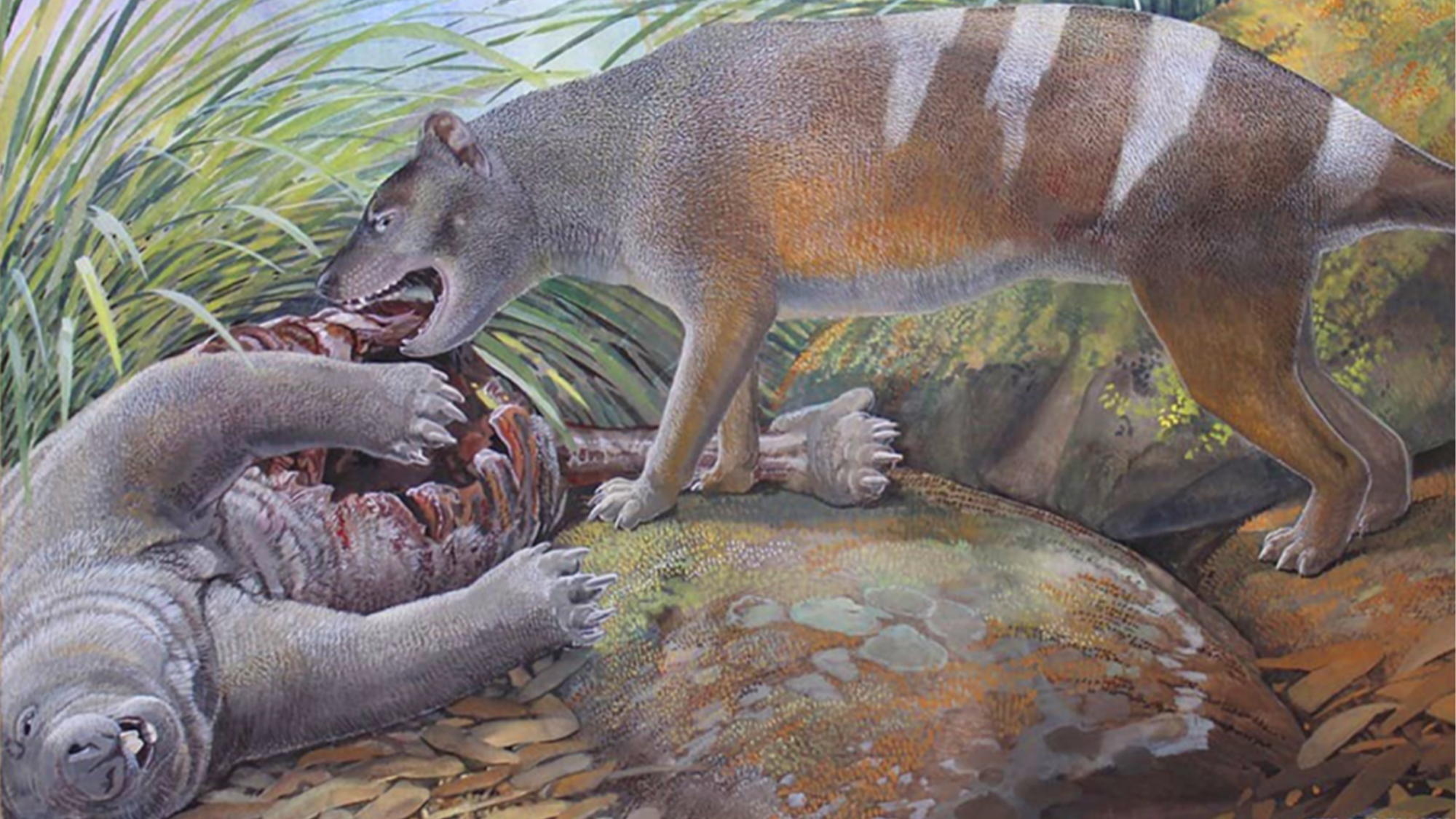Gadgets
New bone-crushing Tasmanian tiger species dug up by paleontologists

Australia has unveiled three new ancient species of Tasmanian tigers, which are now extinct. These marsupials include one with a powerful jawbone capable of crushing its prey’s bones and teeth, a significant carnivore, and the closest known relative of the last Tasmanian tiger species. The findings were published in a study on September 6 in the Journal of Vertebrate Paleontology, coinciding with the 88th anniversary of the death of one of the last known Tasmanian tigers.
Reptiles and Marsupials Fight for Dominance
Tasmanian tigers, part of the Thylacines group of extinct marsupials, inhabited New Guinea, the Australian mainland, and Tasmania approximately 23 to 25 million years ago during the late Oligocene Epoch. These dog-sized creatures were recognized for their distinctive stripes and sharp claws.
The newly described species are considered the oldest members of the Thylacines family discovered by scientists.
[Related: A genetics startup aims to revive the Tasmanian tiger from extinction.]
Timothy Churchill, a study co-author and PhD student at the University of New South Wales (UNSW) Vertebrate Palaeontology Lab, stated, “The once suggested idea that Australia was dominated by reptilian carnivores during these 25 million-year-long intervals is steadily being dismantled as the fossil record of marsupial carnivores, such as these new thylacinids, increases with each new discovery.”
The new species were unearthed in the fossil-rich Riversleigh World Heritage Area in Queensland, where a plethora of fossils, including mammals, reptiles, birds, and more, have been unearthed.
Churchill added, “The diversity of mammalian carnivores at Riversleigh during this period rivals that seen in any other ecosystem, including the great mammalian carnivore radiation that developed in South America.”
Tasmanian Jaws?
Badjcinus timfaulkneri, the largest of the newly discovered species, weighed between 15 to 24 pounds, similar in size to a large Tasmanian devil. Its thick jawbone enabled it to consume the teeth and bones of its prey, resembling the living Tasmanian devil.
This species is related to the smaller Badjcinus turnbulli, weighing around six pounds. The team found the lower jawbone and isolated first molar of Badjcinus timfaulkneri in the Hiatus Site, an even older fossil deposit within the park.
A Close Relative
Nimbacinus peterbridgei, the second new species, weighed approximately eight pounds, similar in size to a Maltese terrier. A nearly complete lower jawbone was discovered from this species at the White Hunter Site.
This predator likely preyed on small mammals and diverse prey species in ancient forests. Species of Nimbacinus are believed to be more closely related to the Tasmanian tiger than other thylacinids from that era. Nimbacinus peterbridgei is considered the oldest direct ancestor of the Tasmanian tiger known to science.
Major Meat Eater
Ngamalacinus nigelmarveni weighed around 11 pounds, similar in size to a Red fox. Its lower molars had long blades with deep “meat cutting” notches, indicating a highly carnivorous diet. It is believed to have been more carnivorous than other thylacinids of similar size.
Australia’s National Threatened Species Day
Australia observes National Threatened Species Day annually on September 7, honoring over 2,000 plant and animal species classified as “threatened.” It also marks the passing of Benjamin, one of the last known Tasmanian tigers, on September 7, 1936.
Tasmanian tigers vanished from the Australian mainland about 2,000 years ago, with factors such as over-hunting and the introduction of the dingo contributing to their extinction. European colonization of Tasmania in the late 19th and early 20th centuries further decimated the population due to misconceptions about their threat to livestock.
[Related: The last Tasmanian tiger’s remains were finally discovered—in a cupboard.]
Benjamin, a Thylacinus cynocephalus, passed away in captivity at the Beaumaris Zoo in Hobart, Tasmania, 88 years ago. This marked the end of the last remaining lineage of Tasmanian tigers that had survived for over 25 million years.
In December 2022, researchers uncovered the remains of the last known Tasmanian tiger in a museum cupboard in Hobart. The older female specimen had been captured and sold to the zoo before its demise, and its skeleton and skin were stored away and forgotten due to questionable acquisition circumstances.
-

 Destination8 months ago
Destination8 months agoSingapore Airlines CEO set to join board of Air India, BA News, BA
-

 Breaking News10 months ago
Breaking News10 months agoCroatia to reintroduce compulsory military draft as regional tensions soar
-

 Gadgets3 months ago
Gadgets3 months agoSupernatural Season 16 Revival News, Cast, Plot and Release Date
-

 Tech News12 months ago
Tech News12 months agoBangladeshi police agents accused of selling citizens’ personal information on Telegram
-

 Productivity11 months ago
Productivity11 months agoHow Your Contact Center Can Become A Customer Engagement Center
-

 Gadgets3 weeks ago
Gadgets3 weeks agoFallout Season 2 Potential Release Date, Cast, Plot and News
-

 Breaking News10 months ago
Breaking News10 months agoBangladesh crisis: Refaat Ahmed sworn in as Bangladesh’s new chief justice
-

 Toys12 months ago
Toys12 months ago15 of the Best Trike & Tricycles Mums Recommend

















